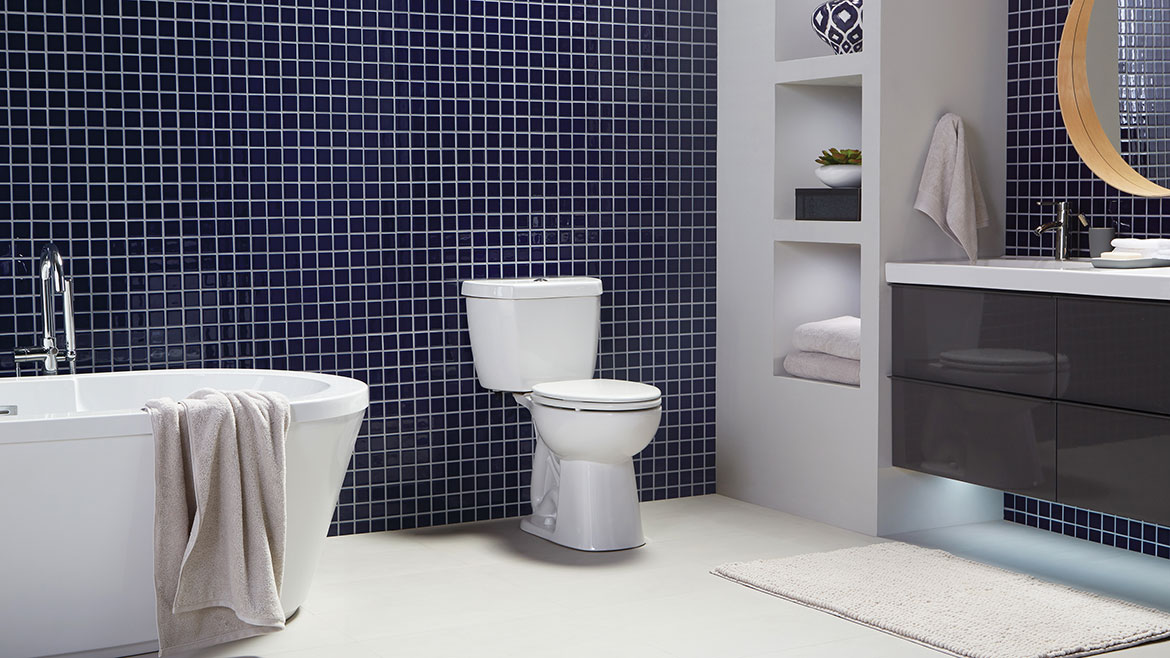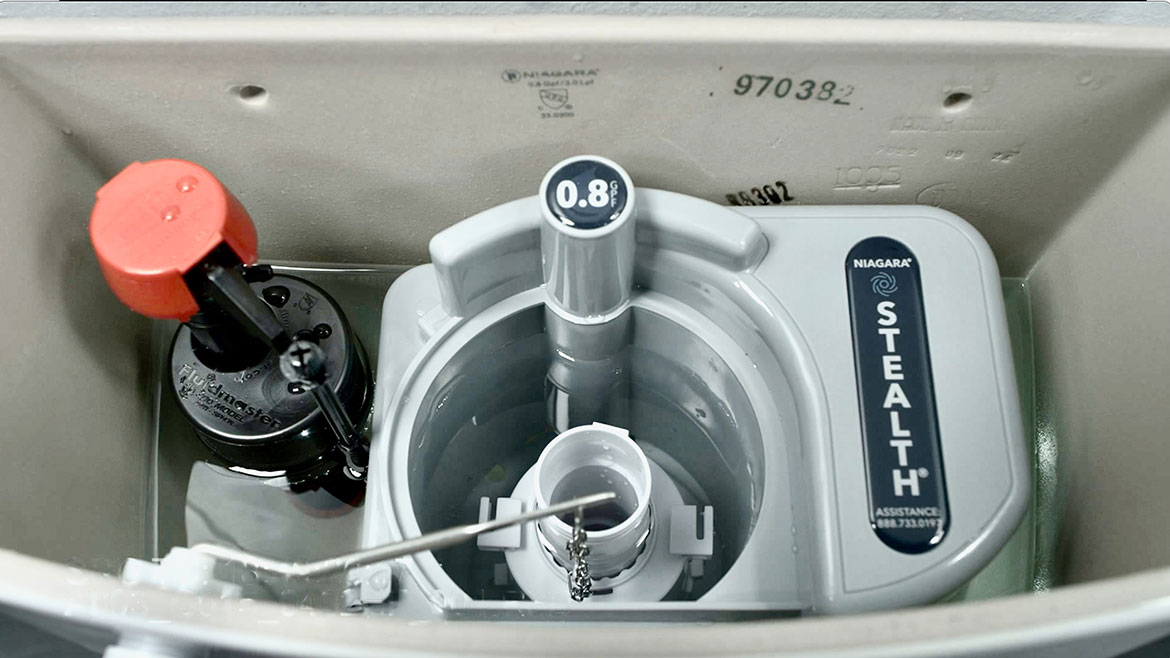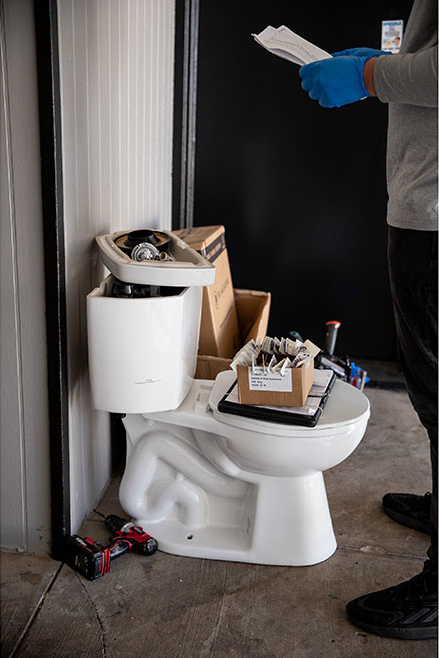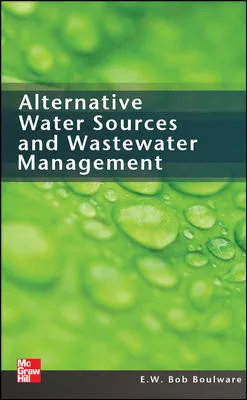EPA and consumer demand call for water saving installations
Trends in water efficiency and sustainability in plumbing.

Image courtesy of arinahabich / iStock / Getty Images Plus
Pollution, population growth, and climate change continue to impact water quality and availability in the United States, especially in the Western region. Groundwater depletion has worsened, impacting agriculture and communities reliant on aquifers. Regions relying on the Colorado River, such as Arizona, California, and Nevada, are especially vulnerable due to reduced snowpack and rising temperatures, intensifying water stress. The Natural Resources Defense Council (NRDC) suggests that 70% of all counties in the U.S. may face more serious water shortages in the next 30 years. This depletion threatens to reduce stream flows, increase land subsidence, and elevate water costs for both households and industries.
Municipalities face a host of challenges, from the drying landscapes and shrinking water reservoirs of the American West to an aging infrastructure and mounting maintenance costs impacting water affordability for millions of low-income citizens across the country. Amid water shortages, the cost of tap water has seen a significant uptick as well, affecting communities nationwide. According to the Boston-based utility research firm Bluefield Research, the average monthly water and sewer bill has increased 54% since 2012, surpassing the rate of inflation twofold during the same period.
EPA implements water standards
The United States has been grappling with water scarcity for decades. As demand for clean water continues to rise, the Environmental Protection Agency (EPA) and local governments introduced measures to reduce water waste. Recognizing that toilets account for 30 percent of the total water usage in an average home, Congress passed the 1992 Energy Policy Act, requiring that all toilets sold in the United States meet a new water conservation standard of 1.6 gallons per flush (GPF).

In 2009, Niagara created the world’s first 0.8 GPF toilet with patented Stealth Technology®, a powerful vacuum-assist flush that used the least amount of water in the world while delivering a powerful and quiet performance. Photo courtesy of Niagara
When low-flow toilets were first introduced in the U.S. following this mandate, the plumbing industry and consumers were initially skeptical. Early models of low-flow toilets were adapted from traditional designs by merely reducing the tank size without redesigning the flushing mechanism. This resulted in performance issues like frequent clogging and the need for multiple flushes to clear waste, frustrating users and plumbers.
The problems with early designs led to negative perceptions, which persisted for years.
Plumbers and consumers associated these toilets with poor performance, believing reduced water use compromised flushing power.
However, manufacturers quickly began innovating. Newer models featured redesigned bowls and systems that improved flushing efficiency. Now, homeowners can replace old, inefficient toilets with WaterSense labeled models – toilets that are tested by the EPA for water efficiency and performance. The average family can reduce water used for toilets by 20 to 60 percent— nearly 13,000 gallons of water savings for every home every year. These models also save more than $170 per year in water costs, and $3,400 over the lifetime of the toilets.
Embracing sustainability
Today, modern high-efficiency, low-flow toilets are widely accepted as effective and environmentally beneficial, and they achieve real water savings. The plumbing industry is embracing sustainability and water efficiency trends, driven by technological advancements and environmental consciousness.
Utility savings and water conserving fixtures, driven by government standards and generational views on environmental outcomes/conservation are driving demand. Approximately 68% of homeowners now prioritize the environmental footprint of their homes, with 52% willing to invest more in sustainability, according to Green Builder Media.

Today, modern high-efficiency, low-flow toilets are widely accepted as effective and environmentally beneficial, and they achieve real water savings. Photo courtesy of Niagara
Municipalities are also establishing benchmarking and performance requirements to monitor and reduce water use. A prime example of a city taking significant steps toward water conservation is Los Angeles. The City of Los Angeles established the Existing Buildings Energy and Water Efficiency (EBEWE) ordinance in 2017 to encourage building owners of buildings over 20,000 square feet (including municipal buildings over 7,500 square feet) to reduce energy and water consumption through benchmarking and performance requirements. Benchmarking efforts allow owners to realize cost savings through lower utility bills, and reduced maintenance and operating costs. And oftentimes, when water and electric bills can go down, property value may go up.
Property owners are often looking for ways to boost their asset value and decrease their utility bills and net operating income in a variety of ways. Transforming an inefficient apartment complex into a water-efficient, well-maintained apartment community vastly improves the quality of life for its residents. For example, after finding water fixture leaks that increased water and sewer expenses, the owners of the Jones Apartments in Arlington, Texas, installed water-efficient fixtures from Niagara, including toilets that flushed at .8 GPF vs the previous toilets that flushed at 1.88 GPF. The new fixtures helped lower expenses by nearly 65%, providing a NOI boost north of $200,000 annually, saving over 1,000,000 gallons a month, and reducing maintenance issues.
Consumer demand for sustainability

Niagara’s Stealth Technology has helped over 4.7 million users save more than 308 billion gallons of water and save over $3.7 billion in utility bills. Photo courtesy of Niagara
While government initiatives and product innovation have been instrumental in addressing water scarcity, there has been a notable shift toward consumer-driven demand for sustainable solutions. Younger generations like Gen X, Millennials, Gen Z, and Alpha place a high value on implementing sustainable living practices, taking a proactive stance by investing time and resources into long-term environmental solutions. For example, nearly 90% of Gen X consumers said they would be willing to spend an extra 10% or more for sustainable products, compared to just over 34% two years ago.
Millennials use about 75 gallons of water per person per day, according to a recent EPA report – 25 gallons less than the average person. A 2023 report by the National Environmental Education Foundation suggests that 90% of Gen Z and Alpha respondents do or will monitor their water usage through apps and utilize social media to spread awareness and mobilize action on water issues. These generations have the potential to make the most robust commitment to water conservation.
Water-saving fixtures, such as high-efficient low-flow toilets, faucets, and showerheads, are becoming standard. Dual-flush toilets, which offer different water volumes depending on the use, exemplify this trend. Greywater recycling systems are also gaining traction, enabling the reuse of water from sinks and showers for non-potable purposes like irrigation and toilet flushing, thus reducing dependence on freshwater sources.
Manufacturers are listening to the growing demand for water sustainability and continue to innovate with smart plumbing solutions, smart toilets and faucets, and IoT-enabled water meters. The smart bathroom market size is expected to grow at a compound annual growth rate (CAGR) of 10.25% from 2020 to 2027 (Grandview Research). These technologies allow homeowners to monitor water usage and automate maintenance, contributing to resource conservation and operational efficiency.
90% of Gen X consumers said they would be willing to spend an extra 10% or more for sustainable products, compared to just over 34% two years ago. Millennials use about 75 gallons of water per person per day, according to a recent EPA report – 25 gallons less than the average person.
Plumbers will need to continue to look for key industry certifications like WaterSense and MaP or MaP® Premium to trust that products will drastically cut water use with little and maintain high performance. They will also need to consider choosing products made with materials that minimize impact. For example, Vitreous China toilets can be one hundred percent recyclable, and they have a lifespan of close to 20 years.
Embracing water-efficient plumbing solutions and supporting innovations in water-saving technologies can significantly reduce consumption and help combat the effects of climate change. The shift toward sustainable plumbing solutions reflects both market demands and environmental priorities, creating new opportunities for contractors and homeowners to invest in efficient systems that lower costs and resource use over time. By continuously improving the design and functionality of water-saving products, companies help create a future where water efficiency becomes the standard, not the exception. For homeowners and businesses, investing in such solutions is both an environmentally responsible and financially smart decision.
Looking for a reprint of this article?
From high-res PDFs to custom plaques, order your copy today!







